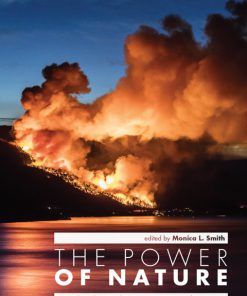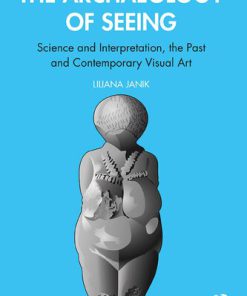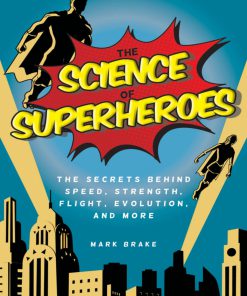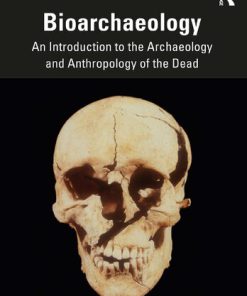Archaeology The Science of the Human Past 6th Edition by Mark Q Sutton 0367627205 9780367627201
$50.00 Original price was: $50.00.$25.00Current price is: $25.00.
Archaeology The Science of the Human Past 6th Edition by Mark Q Sutton – Ebook PDF Instant Download/Delivery: 9780367627201 ,0367627205
Full download Archaeology The Science of the Human Past 6th Edition after payment
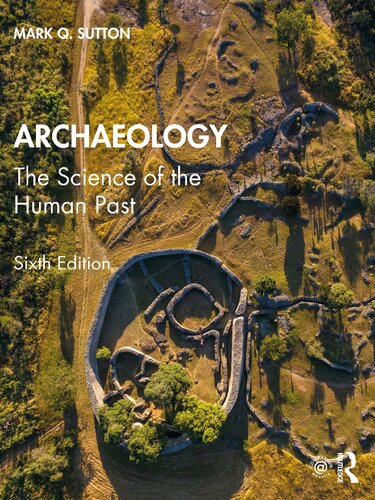
Product details:
ISBN 10: 0367627205
ISBN 13: 9780367627201
Author: Mark Q Sutton
Archaeology: The Science of the Human Past provides students with a thorough understanding of what archaeology is and how it operates and familiarizes them with fundamental archaeological concepts and methods. This volume introduces the basic components of archaeology, including sites, artifacts, ecofacts, remote sensing, and excavation. It discusses how archaeologists obtain and classify information and how they analyze this information to formulate and test models of what happened in the past. Cultural resource management and the laws and regulations that deal with archaeology around the world are described. Archaeology is placed in the context of contemporary issues, from environmental problems to issues affecting Indigenous populations. The sixth edition has been updated and simplified to create a more streamlined volume, to meet the needs of the students and teachers for whom it is designed, reflecting the latest developments in archaeological techniques and approaches. Allowing students to understand the theoretical and scientific aspects of archaeology and how various archaeological perspectives and techniques help us understand how and what we know about the past, Archaeology: The Science of the Human Past is an ideal introduction to archaeology.
Archaeology The Science of the Human Past 6th Table of contents:
part I What is Archaeology?
chapter 1 The Science of Archaeology
What Is Archaeology?
Archaeology and Anthropology
Archaeology and the Other Sciences
The Basic Goals of Archaeology
The Branches of Archaeology
Prehistoric Archaeology
Historical Archaeology
Highlight 1.1 The Archaeology of Enslaved Africans in the New World
Classical Archaeology
Maritime Archaeology
Highlight 1.2 The Mary Rose
Highlight 1.3 An Ancient Boat Comes to Life
Public Archaeology
Key Concepts in Archaeology
The Archaeological Record
Cultural Deposition, Stratigraphy, and Dating
Archaeological Cultures
Archaeology as Science
The Structure of Scientific Knowledge
The Scientific Method
Research Design
Pseudoscience
Frauds
Archaeology and Prehistory
The Importance of Archaeology
Chapter Summary
Key Concepts
Suggested Readings
chapter 2 Background of Archaeology
Ancient Archaeology
Antiquarians
The Discovery of a Prehistoric Past
The Classical States
Highlight 2.1 The Buried Cities Below Vesuvius
The Emergence of Professional Archaeology
A Historical Approach
Unilinear Cultural Evolution
Diffusion as an Early Explanatory Model
Improving Field Methods
Developing the Outline of World Prehistory
Prehistory of the Americas
Highlight 2.2 The Moundbuilders
Prehistory of Sub-Saharan Africa
Prehistory of Asia and Oceania
Political Influences on the History of Archaeology
Colonialism
Highlight 2.3 Great Zimbabwe
Nationalism
General Biases
Chapter Summary
Key Concepts
Suggested Readings
chapter 3 The Development of Contemporary Archaeology
Archaeology After World War II
The Rise of Scientific Archaeology
Research Design in Archaeology
Middle-Range Theory
Highlight 3.1 Ethnoarchaeology Among the Aka of Central Africa
Highlight 3.2 Experimental Archaeology: Building Models to Test the Hunting-Scavenging Debate
Cultural Materialism
Expanding Theoretical Horizons
Gender and the Past
The Archaeology of Power
Behavioral Archaeology
Evolutionary Archaeology
Cognitive Archaeology
Indigenous Archaeology
Archaeological Frontiers
Highlight 3.3 Exoarchaeology
Careers in Archaeology
Becoming an Archaeologist
Chapter Summary
Key Concepts
Suggested Readings
part II Obtaining Information About the Past
chapter 4 The Archaeological Record
Archaeological Sites
Types of Sites
Highlight 4.1 Ancient Footprints at Laetoli
Site Deposits
Highlight 4.2 Tell es-Safi: Goliath’s Hometown
Site Formation and Transformation
Geological Processes
Taphonomic Processes
Bioturbation
Human Action
Preservation
Preservation Conditions
Preservation and the Environment
Material Remains
Artifacts
Ecofacts
Features
Architecture
Highlight 4.3 How Were the Egyptian Pyramids Built?
Human Remains
Recognizing and Recovering Evidence
Ongoing Impacts on the Archaeological Record
Highlight 4.4 The Looting of Angkor Wat
Chapter Summary
Key Concepts
Suggested Readings
chapter 5 Conducting Fieldwork
Finding Sites
Accidental Discoveries
Project-Related Discoveries
Highlight 5.1 The Discovery of Lascaux
Conducting Archaeological Surveys
Background Studies
Remote Sensing Techniques for Finding Sites
Highlight 5.2 Rediscovering Maya Cities With LiDAR
Sampling
Recording Sites
Excavating Sites
Mapping the Site
Deciding Where to Dig
Digging
Recovering and Cataloging Data
Working With Specialists
Practical Aspects of Fieldwork
Funding and Staffing
Curation
Occupational Hazards in Archaeology
Ethics in Archaeological Fieldwork
Highlight 5.3 Scandal! Planting Artifacts in Japan
Legal Issues
Humanistic Issues
Professional Obligations
Chapter Summary
Key Concepts
Suggested Readings
chapter 6 Classification and Analysis of Artifacts
Classification and Typology
Attributes
Temporal Types
Assemblage Types
Classifying Types of Artifacts
Stone
Ceramics
Metal
Glass
Highlight 6.1 Historical Material Culture: A View From Chinatown in Riverside, California
Shell and Bone
Highlight 6.2 The Flutes of Jiahu
Perishables
Analyzing Artifacts
Use-Wear Analysis
Geochemical Sourcing
Residue Analysis
DNA Analysis
Chapter Summary
Key Concepts
Suggested Readings
chapter 7 Determining Time
What Is So Important About Time?
Older or Younger? Relative Dating in Archaeology
Stratigraphy and Superposition
Index Fossils and Biostratigraphy
Temporal Types
Seriation
Fluorine, Uranium, and Nitrogen (FUN) Dating
Real Time: Absolute Dating
Dendrochronology
Radiocarbon Dating
Highlight 7.1 Dating the Shroud of Turin
Potassium-Argon Dating
Uranium-Thorium Dating
Obsidian Dating
Other Absolute Dating Methods
Chapter Summary
Key Concepts
Suggested Readings
chapter 8 Bioarchaeology: Human Remains
What Is Bioarchaeology?
Ethics and Politics
The Funerary System
The Funerary System I: Pretreatment of the Living
The Funerary System II: The Mortuary Process
Highlight 8.1 The Ice Princess
Highlight 8.2 The Roman Mummies of Tell El-Hibeh
Highlight 8.3 KV-5: The Mega Tomb for the Sons of Rameses the Great
The Funerary System III: Commemorative Behavior
Skeletal Remains
The Human Skeleton
Estimating Sex
Estimating Age
Estimating Stature
Estimating Ancestry
Soft-Tissue Evidence
Investigating Health and Nutrition
Pathology and Trauma
Highlight 8.4 Ancient Cannibals?
Chemical Analyses
Stable Isotope Analysis
Analysis of Ancient DNA
What People Looked Like: Soft-Tissue Reconstruction From Skeletal Data
Paleodemography
Constructing a Biocultural Profile
Tracking Skeletal Variability in Early Human Ancestors
Contemporary Forensics
Chapter Summary
Key Concepts
Suggested Readings
part III Interpreting the Past
chapter 9 Environment and Adaptation
The Environment
Highlight 9.1 Rapa Nui’s Ecological Disaster
Environmental Archaeology
Reconstructing Past Landforms
Reconstructing Past Plants and Animals
Reconstructing Past Climate
Human Biological Adaptation
Evolutionary Ecology
Optimization Models
Human Cultural Adaptation
Highlight 9.2 Island Geography and Subsistence Practices in Polynesia
Controlling the Environment
Domestication and the Agricultural Revolution
Highlight 9.3 Detecting Animal Domestication
Chapter Summary
Key Concepts
Suggested Readings
chapter 10 Understanding Past Settlement and Subsistence
Where People Lived: Past Settlement Systems
Settlement Archaeology
Understanding Site Components
Analyzing Populations
Catchment Analysis
The Interplay Between Settlement and Subsistence
How People Made a Living: Subsistence
Highlight 10.1 The Impacts of Agriculture and Urbanization on Health and Nutrition
The Four Primary Subsistence Systems
Evidence of Subsistence
Subsistence Technology and Organization
Highlight 10.2 Diet and Cuisine at Lake Cahuilla
Recovery and Identification of Ecofactual Evidence
Quantifying Ecofactual Remains
Chapter Summary
Key Concepts
Suggested Readings
chapter 11 Interpreting Past Cultural Systems
How Archaeology Can Answer Anthropological Questions
Social Archaeology
Cognitive Archaeology
Interpreting Past Social Structures
Kinship
Social Stratification
The Archaeology of Gender
The Archaeology of Ethnicity
Interpreting Past Political Organization
Four Types of Political Organization
Some Theories of the Origin of States
Interpreting Past Belief Systems
Religious Organization and Expression
Cosmology, Philosophy, and Oral Tradition
Highlight 11.1 The Terracotta Army
Highlight 11.2 Archaeoastronomy
Iconography, Art, and Expression
Highlight 11.3 Art and Archaeology in Africa
Remembering the Individual
Chapter Summary
Key Concepts
Suggested Readings
chapter 12 Understanding Change
The Archaeology of Change
A Systems Approach
Evolutionary Approaches
Invention and Diffusion
Social and Political Movements
Migrations and Diasporas
Highlight 12.1 Archaeology of the Proto-Polynesian
Interpreting Evidence of Change
Reconstructing Events
Reconstructing Patterns and Trends
Cultural Contact and Conflict
The Archaeology of Trade
The Archaeology of Warfare
Highlight 12.2 Archaeology of the Silk Road: Ancient Mummies of the Tarim Basin
Highlight 12.3 Thermopylae, 480 BCE
Chapter Summary
Key Concepts
Suggested Readings
part IV Public Archaeology
chapter 13 Cultural Resource Management
The Impact of Population Growth and Development on the Archaeological Record
The Field of Cultural Resource Management
Antiquities Legislation in the United States
The National Historic Preservation Act
Compliance Archaeology
The Archaeological Resources Protection Act
The Native American Graves Protection and Repatriation Act
Antiquities Legislation Around the World
Highlight 13.1 Preserving Abu Simbel
Site Preservation and Restoration
The Role of Public Education in Archaeological Preservation
Cultural Resource Management Among Traditional Peoples
Archaeology and Ethics
Highlight 13.2 Heritage Management in Australia
Chapter Summary
Key Concepts
Suggested Readings
chapter 14 Archaeology in Today’s World
Archaeology Today
Archaeology and Politics
Who Owns the Past?
Highlight 14.1 Native Americans and Archaeologists in the United States
Learning From the Past: Applying Archaeology to Contemporary Problems
Highlight 14.2 The Ancient Maya and the Rain Forest
Archaeology and Information Technology
Archaeology, Mass Media, and Public Perception
So What? The Significance of Archaeology
Chapter Summary
Suggested Readings
Glossary
References
Index
People also search for Archaeology The Science of the Human Past 6th:
what is human evolution in anthropology
where did humans come from according to science
history of archaeology
archaeologist study the past by
archaeology the essential guide to our human past
Tags: Mark Q Sutton, Archaeology, Human Past, Science
You may also like…
Politics & Philosophy - Anthropology
The Power of Nature Archaeology and Human Environmental Dynamics 3rd Edition Robert Alfano
Uncategorized
Arts - History & Criticism
Uncategorized
Uncategorized
Uncategorized
Education Studies & Teaching - Education - General & Miscellaneous
History - Archaeology
Uncategorized
Archaeology The Science of the Human Past 6th Edition by Mark Q Sutton ISBN 9781003110521 0367627205



